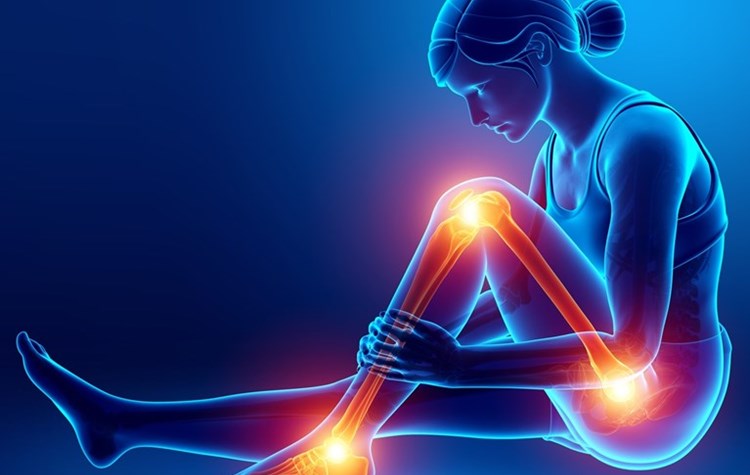
Arthritis: Symptoms, Causes, Types & Treatment
- Dr Kumar
Arthritis: Understanding the Aches and Pains
Arthritis is a common condition that affects millions of people around the world. It is characterized by joint pain and inflammation, which can lead to stiffness and a reduction in mobility. In this blog, we will explore what arthritis is, the different types of arthritis, and various treatment options, including Ayurveda, naturopathy, diet, and exercises.
What is Arthritis?
Arthritis is a term used to describe inflammation of the joints. The word “arthritis” comes from the Greek “arthro,” meaning joint, and “itis,” meaning inflammation. There are over 100 different types of arthritis, and each type affects the joints in a unique way. Some of the most common forms of arthritis include osteoarthritis, rheumatoid arthritis, psoriatic arthritis, and gout.
Types of Arthritis
- Osteoarthritis: This is the most common form of arthritis, and it is caused by the wearing down of cartilage in the joints. It is typically associated with aging and is most common in the hips, knees, and hands.
- Rheumatoid Arthritis: This is an autoimmune disorder that causes inflammation of the joints. It can also affect other parts of the body, including the lungs and heart.
- Psoriatic Arthritis: This form of arthritis is associated with psoriasis, a skin condition that causes red, scaly patches. It typically affects the fingers and toes, but it can also affect the hips, knees, and spine.
- Gout: This is a type of arthritis that is caused by high levels of uric acid in the blood. It typically affects the big toe, but it can also affect other joints.
Ayurveda Treatment of Arthritis
Ayurveda is an ancient Indian system of medicine that has been used to treat a wide variety of ailments for thousands of years. Ayurveda views arthritis as a problem with the accumulation of ama, or toxic waste, in the body. To treat arthritis, ayurvedic practitioners may recommend herbal remedies, massage, and changes in diet and lifestyle. Panchkarma (cleansing therapy which consist 5 processes) play very good role to treat this condition. Dashmul quath, vit D, local fomentation also are very helpful.

One of the most commonly used Ayurveda remedies for arthritis is ginger. Ginger has anti-inflammatory properties that can help to reduce joint pain and swelling. Another popular remedy is turmeric, which is known for its anti-inflammatory and pain-relieving properties.
Naturopathy Treatments of Arthritis
Naturopathy is a holistic approach to health that emphasizes the use of natural remedies to promote healing. Naturopathy views arthritis as a symptom of a deeper imbalance in the body, and it seeks to address this imbalance through dietary and lifestyle changes.

Naturopathic treatments for arthritis may include herbal remedies, acupuncture, and massage. Herbs such as willow bark, devil’s claw, and white willow are often used to reduce joint pain and swelling. Acupuncture is a form of Chinese medicine that involves the insertion of fine needles into specific points on the body. It is believed to help balance the flow of energy in the body and reduce joint pain.
Diet in Arthritis
Diet is an important aspect of managing arthritis and can play a role in reducing joint pain and inflammation. Here are some dietary recommendations for people with arthritis:
- Anti-inflammatory foods: A diet that is rich in anti-inflammatory foods such as omega-3 fatty acids, found in fatty fish like salmon, as well as in nuts and seeds, and a variety of fruits and vegetables can help reduce joint pain and swelling.
- Gluten-free foods: Some people with arthritis may benefit from avoiding gluten, which is a protein found in wheat, barley, and rye. Gluten can trigger inflammation in some people, so eliminating it from the diet may help reduce joint pain and inflammation.
- Low-purine foods: People with gout, a type of arthritis, should avoid high-purine foods, such as red meat, organ meat, and seafood, as purines can contribute to the formation of uric acid crystals in the joints.
- Hydration: Staying hydrated is important for overall health, including joint health. Drinking plenty of water can help reduce joint pain and swelling.
- Moderation: It is important to maintain a healthy weight, as excess weight can put additional strain on the joints. Limiting processed and high-calorie foods can help maintain a healthy weight.
It is important to remember that individual dietary needs may vary and it is always best to consult a healthcare professional for personalized dietary advice. A dietitian or a nutritionist can provide personalized recommendations based on your specific health condition, symptoms, and medical history.
In conclusion, a balanced and healthy diet can play a significant role in managing arthritis. Incorporating anti-inflammatory foods, avoiding triggers, and maintaining a healthy weight can help reduce joint pain and inflammation. It is important to consult a healthcare professional for personalized dietary advice and to develop a meal plan that works for you.
Role of Exercises in Arthritis
Exercise is a crucial aspect of managing arthritis and can help reduce joint pain, improve flexibility and mobility, and enhance overall physical function. Here are some ways in which exercise can help people with arthritis:
- Strengthening muscles: Regular exercise, particularly weight-bearing and strength-training exercises, can help strengthen the muscles around the joints, providing additional support and reducing strain on the joints.
- Improving flexibility: Gentle stretching and range-of-motion exercises can help improve flexibility and reduce joint stiffness.
- Improving balance: Balance exercises, such as tai chi or yoga, can help improve stability and reduce the risk of falls.
- Increasing cardiovascular fitness: Cardiovascular exercise, such as walking, cycling, or swimming, can improve heart health and overall physical function.
- Reducing pain: Exercise has been shown to reduce joint pain and swelling, as well as improve mood and quality of life in people with arthritis.
It is important to consult a physical therapist or a healthcare professional before starting a new exercise program, as they can provide personalized recommendations and modifications for individual needs and limitations.
In conclusion, regular exercise is an important part of managing arthritis and can provide numerous physical and psychological benefits. Incorporating a combination of strengthening, stretching, balance, and cardiovascular exercises into your routine can help reduce joint pain, improve flexibility and mobility, and enhance overall physical function
Role of Supplement & Precaution in Arthritis
Nutritional supplements and precautious measures can also play a role in managing and preventing arthritis. Here are some ways in which nutritional supplements and precautions can help:
- Nutritional supplements: Certain nutritional supplements, such as glucosamine, chondroitin, and methylsulfonylmethane (MSM), have been shown to have a potential beneficial effect on joint health and reduce joint pain. However, it is important to consult a healthcare professional before starting any new supplement, as some supplements may interact with prescription medications or have side effects.
- Omega-3 fatty acids: Omega-3 fatty acids, found in fatty fish like salmon and in supplements, have been shown to have anti-inflammatory properties and may help reduce joint pain and swelling.
- Vitamin D: Vitamin D is important for bone health and may also have a positive impact on joint health. People with arthritis may benefit from vitamin D supplements or getting adequate sun exposure to maintain healthy vitamin D levels.
Precautions to prevent arthritis:
- Maintaining a healthy weight: Excess weight can put additional strain on the joints and increase the risk of developing arthritis.
- Regular physical activity: Regular physical activity, particularly weight-bearing and strength-training exercises, can help maintain joint health and prevent the development of arthritis.
- Avoiding joint injury: Taking precautions to avoid joint injury, such as using proper lifting techniques and wearing protective gear during physical activity, can help reduce the risk of developing arthritis.
- Managing underlying conditions: Treating and managing underlying conditions, such as osteoporosis or diabetes, can help reduce the risk of developing arthritis.
In conclusion, nutritional supplements and precautions can play a role in managing and preventing arthritis. It is important to consult a healthcare professional for personalized recommendations and to ensure that any supplement or precaution is safe and appropriate for individual needs and limitations. A balanced and healthy diet, regular physical activity, and avoiding joint injury are key to maintaining joint health and preventing the development of arthritis.
